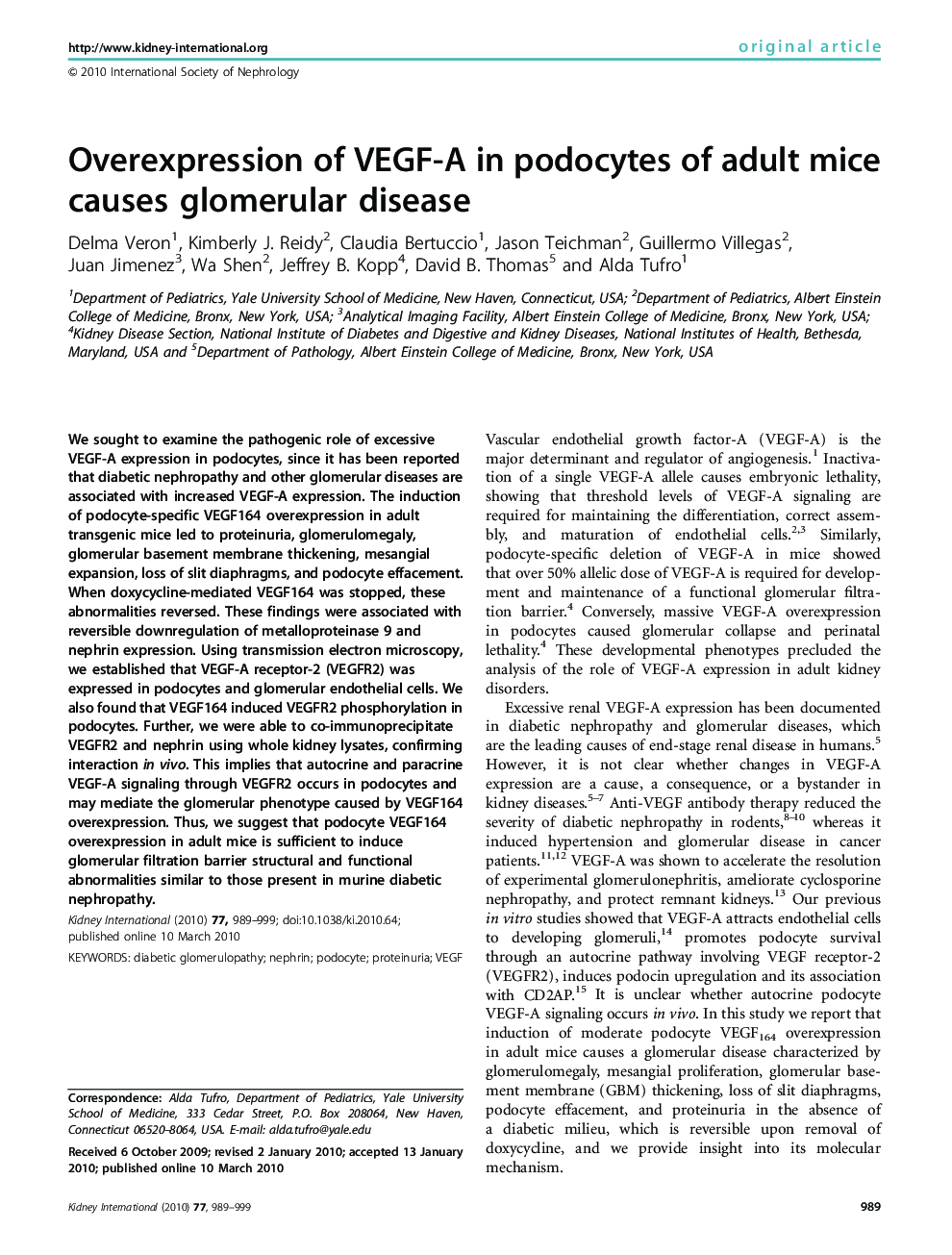| Article ID | Journal | Published Year | Pages | File Type |
|---|---|---|---|---|
| 3884993 | Kidney International | 2010 | 11 Pages |
We sought to examine the pathogenic role of excessive VEGF-A expression in podocytes, since it has been reported that diabetic nephropathy and other glomerular diseases are associated with increased VEGF-A expression. The induction of podocyte-specific VEGF164 overexpression in adult transgenic mice led to proteinuria, glomerulomegaly, glomerular basement membrane thickening, mesangial expansion, loss of slit diaphragms, and podocyte effacement. When doxycycline-mediated VEGF164 was stopped, these abnormalities reversed. These findings were associated with reversible downregulation of metalloproteinase 9 and nephrin expression. Using transmission electron microscopy, we established that VEGF-A receptor-2 (VEGFR2) was expressed in podocytes and glomerular endothelial cells. We also found that VEGF164 induced VEGFR2 phosphorylation in podocytes. Further, we were able to co-immunoprecipitate VEGFR2 and nephrin using whole kidney lysates, confirming interaction in vivo. This implies that autocrine and paracrine VEGF-A signaling through VEGFR2 occurs in podocytes and may mediate the glomerular phenotype caused by VEGF164 overexpression. Thus, we suggest that podocyte VEGF164 overexpression in adult mice is sufficient to induce glomerular filtration barrier structural and functional abnormalities similar to those present in murine diabetic nephropathy.
